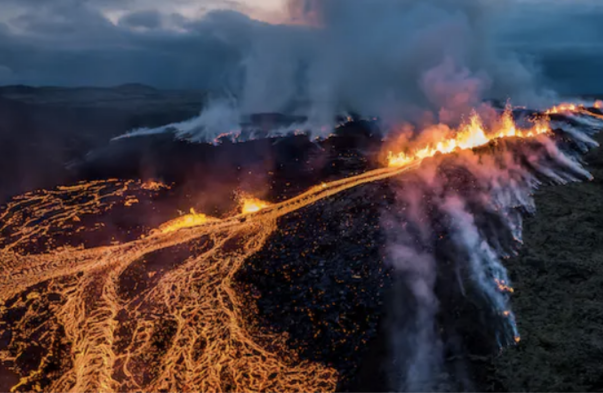A new fissure eruption started on the Reykjanes Peninsula by Hagafell and Stóra-Skógfell at 8.23pm on March 16th. This marks the fourth eruption in the area since December of last year.
On average, a volcano erupts in Iceland erupts every five years. Since 2021, however, the frequency has been closer to every 12 months! The area broadly known as Fagradalsfjall, some 35km from the capital Reykjavík, flared to life after a series of earthquakes on the Reykjanes Peninsula. The three eruptions – some consider one single eruption with months-long pauses – mark the beginning of a new geological era on the southwestern peninsula, which has been dormant for the past 800 years.
Unlike most volcanic eruptions — occurring on the interior highlands, the lava hidden under ice and/or with lethal volumes of volcanic gases — Fagradalsfjall was the ideal ‘tourist volcano’: Small in relative terms and accessible for all levels of fitness.
The last eruption at Fagradalsfjall ended in August 2023, but the site still remains a major attraction. The thick, black crust of lava paves the landscape with crumbling craters and steam.
Of Iceland’s 32 active volcanoes, none is watched more closely than Katla. One of the nation’s largest and most feared, Katla lies under glacial ice hundreds of meters (yards) thick, meaning that any eruption is likely to melt the ice and cause widespread flooding.
Katla last erupted in 1918 but gained revived attention in recent years with the dystopian Netflix series Katla, largely filmed in the area surrounding Vík.
Iceland’s most famous – infamous, even – remains Eyjafjallajökull. The Eyjafjallajokull eruption of 2010 stranded millions of tourists worldwide as it grounded more than 100,000 flights over seven days because of concerns that its volcanic ash would damage aircraft engines.
In 2023, the volcano Askja showed signs of possible eruption. For latest alerts, check the official Catalogue of Icelandic Volcanos and see if any of the 32 active volcanic systems in Iceland has a color code RED (a volcano is considered active if it has erupted in the past 10,000 years). If no volcano is erupting, likely, we won’t have to wait too long for the next one since Iceland is one of the most active volcanic regions on the planet.
